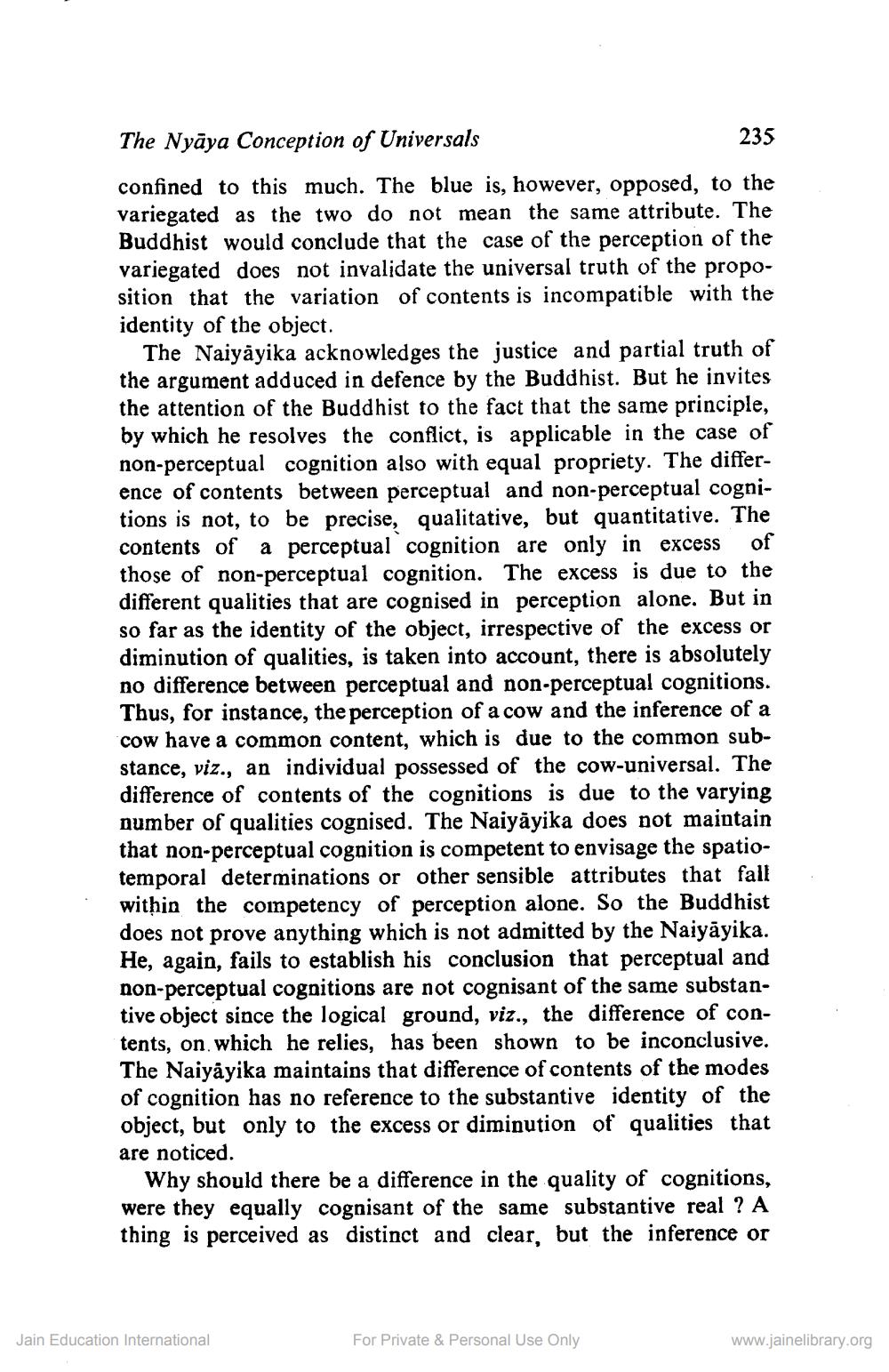________________
The Nyāya Conception of Universals
235
confined to this much. The blue is, however, opposed, to the variegated as the two do not mean the same attribute. The Buddhist would conclude that the case of the perception of the variegated does not invalidate the universal truth of the proposition that the variation of contents is incompatible with the identity of the object.
The Naiyāyika acknowledges the justice and partial truth of the argument adduced in defence by the Buddhist. But he invites the attention of the Buddhist to the fact that the same principle, by which he resolves the conflict, is applicable in the case of non-perceptual cognition also with equal propriety. The difference of contents between perceptual and non-perceptual cognitions is not, to be precise, qualitative, but quantitative. The contents of a perceptual cognition are only in excess of those of non-perceptual cognition. The excess is due to the different qualities that are cognised in perception alone. But in so far as the identity of the object, irrespective of the excess or diminution of qualities, is taken into account, there is absolutely no difference between perceptual and non-perceptual cognitions. Thus, for instance, the perception of a cow and the inference of a cow have a common content, which is due to the common substance, viz., an individual possessed of the cow-universal. The difference of contents of the cognitions is due to the varying number of qualities cognised. The Naiyāyika does not maintain that non-perceptual cognition is competent to envisage the spatiotemporal determinations or other sensible attributes that fall within the competency of perception alone. So the Buddhist does not prove anything which is not admitted by the Naiyayika. He, again, fails to establish his conclusion that perceptual and non-perceptual cognitions are not cognisant of the same substantive object since the logical ground, viz., the difference of contents, on which he relies, has been shown to be inconclusive. The Naiyáyika maintains that difference of contents of the modes of cognition has no reference to the substantive identity of the object, but only to the excess or diminution of qualities that are noticed.
Why should there be a difference in the quality of cognitions, were they equally cognisant of the same substantive real ? A thing is perceived as distinct and clear, but the inference or
Jain Education International
For Private & Personal Use Only
www.jainelibrary.org




